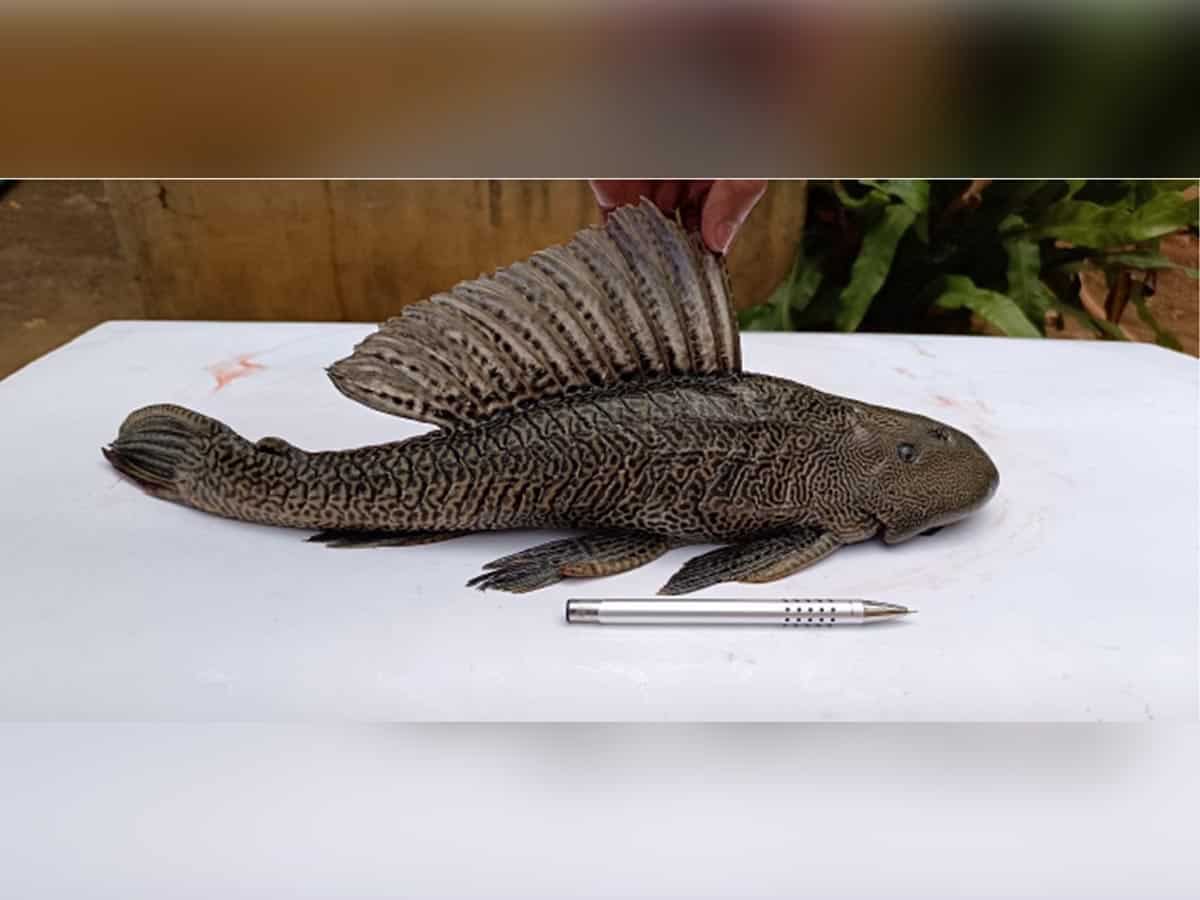
CCMB scientists have developed a technique to detect invasive fish that threaten ecosystems and lead to loss in fish catch.
They have developed an eDNA-based quantitative PCR assay to map the presence and spread of the invasive armored sailfin catfish in the water bodies of Eastern Ghats.
This is a fish, originating from South America that was once introduced for its unique appearance and its ability to clean algal growth in tanks and aquaria. But now it has spread to 60% of water bodies of the Eastern Ghats, specifically in Andhra Pradesh, Telangana, and Tamil Nadu and is also damaging fishing nets and the overall ecosystem.
The catfish was first reported in the fresh waters of Puerto Rico in Venezuela. The exotic fish has gained notoriety in India as the ‘Devil fish’. Its spread in the water bodies of the three states is posing a threat to over 150 species of freshwater fishes.
eDNA is environmental DNA (Deoxyribonucleac Acid) that is collected from water samples. In the mix of many kinds of DNA in such water samples, the CCMB scientists looked for the DNA of the concerned catfish specifically.
Not just the mere presence of the fish, the method can also tell the extent of the spread of the fish, according to Neeldeep Ganguly and Dr G Umapathy, Chief Scientist at CSIR-Centre for Cellular and Molecular Biology (CCMB), Hyderabad.
Focus on aquatic invasive species
What are invasive species and what role do they play in the ecosystem?
The CCMB scientists explained that Invasive species are those which are introduced into a new ecosystem. They can grow rapidly as most often they lack predators.
The consequences of such an introduction and proliferation of the species is that they can threaten the new ecosystem and the livelihoods of people that depend on it. They are especially of growing concern in biodiversity-rich countries such as India.
The work has been published in the journal Environmental DNA.
Advantages of early detection
The scientists say that prior detection of invasive fish is crucial for preserving ecosystems, reducing loss of fish catch and supporting ecological equilibrium.
The CCMB technique helps in early detection of the armored sailfin catfish and its distribution in the Eastern Ghats waterbodies. This significantly adds to continuing invasive species management efforts that directly help the survival of native and economically important fishes,” said Dr Umapathy, the lead author of the study.
This new method brings in advantages over the existing methods. “The conventional methods of detection of invasive species, which can only be used in smaller geographical coverage, are labour and cost-intensive. On the other hand, the environmental DNA approach is reliable, accurate, and low-cost. It can be used in a large landscape like Eastern Ghats water bodies in a few months.
“In a single lab test, about 20 waterbodies can also be tested for the presence of invasive species using the eDNA approach accurately, once the method is in place,” said Dr Vinay K Nandicoori, Director, CCMB.
The armoured sailfin catfish is typically about a few inches. It has the ability to grow up to two feet when let out into a larger water body. They are normally used in cleaning aquariums and tanks. They also feed on algae.
However, the general practice is to release them into larger water bodies by the owners once the initial purpose is served. There the fishes grow and multiply fast. A consequence of this is the sudden competition for the food resource and threat to the existing fish population.
For the farmers and fishermen, these cat fishes pose the threat of damaging fishnets if caught by accident. Their sharp bony plates also provide them protection against potential predators such as birds and other fishes.
Earlier study by CCMB
In earlier studies the CCMB scientists have demonstrated the utility of the eDNA technique to detect the North African Sharptooth catfish, which was causing havoc in freshwater fish populations.
The Sharptooth catfish was illegally introduced in India for aquaculture purposes. The Indian government banned the culturing and selling of the species due to the ecological damage it was causing. However, the control and management of the species remains a challenge.
The traditional methods of detecting invasive species are through the use of traps, visual observation, nets and other means which are cumbersome. In the light of this, the team led by Dr G Umapathy developed Environmental DNA (eDNA)-based molecular methods that provide a time and cost-effective alternative to detecting the specific species.
The scientists published the research work in Biological Invasions in 2022.
